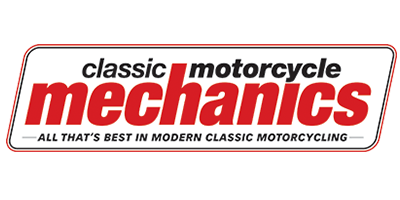Looking at nearly all classic motorcycles, you will notice that a first year of production run of any model is the most expensive and hard to find. A Kawasaki Z1 900 from 1972 will cost 50% more than a Z900A going 1974-1977. A Honda CB750K0 will cost up to three times as much as CB750K1-6. Why is that?
There are several reasons for this. First year production runs are usually smaller than ensuing years and therefore, there are less machines available. I was told by an authority on Kawasakis, who is no longer with us to check, that they made 22,000 Z1 900s. However, actual sales figures for each model are very difficult to establish, because manufacturers records and production figures are not so readily available from that era. He could well have meant that it was 22,000 Z1s including Z1As. Wikipedia estimates that a total of 85,000 Z900s were produced between 1972 and 1975, however new Z900A5s were still being sold in 1977. The point is that, I suspect, there were about 5-7,000 proper Z1s produced between 1972 and 1973, excluding the Z1A. Of that, about 2-3,000 would have been written off and either destroyed or completely butchered into something that no one could ever afford to restore. That doesn’t leave many in the hands of collectors.
Of all the post Z1 900s Kawasaki sold, if half were destroyed, then there should be about 40,000 left of the Z900, Z1A-A5. But they are not Z1 900s. So you can understand how rare a Z1 900 is from the first year of production.
I have had conflicting figures for Honda CB750K0s, I have been told that between 5,000 and 7,400 CB750K0s were produced. What I can establish, is that only 299 K0s had the die cast engine, the rest were all sand cast motors. From the K1 onwards they were all die cast engines. Assuming only half of the originals survive today, that doesn’t leave many K0s for collectors.
So you can see how rare a first year of production classic motorcycle is. Usually this first year production run was kept smaller, during the 1960s and 70s, so that any faults would result in fewer recalls. Just ask Suzuki how costly the recall was on their TL1000S after selling over 10,000 units.
When an owner got hold of their brand new Z1 900 or CB750K0, the first thing they did was to rid the bike of the four into four pipes in favour of a more sleek, lighter, louder, race styled four into one system. Now you will pay up to £2,000 for replacing those four standard exhausts for a Z1 900, if you can find a decent set. The Honda four into four system can still be bought new at about £1,500. For a Honda CBX1000, the original 6 into 2 exhaust system is unavailable and I cannot guess what you would pay for a decent set of pipes now. So finding a decent machine to restore, plus the cost of restoration is far greater than the cost of buying a fully restored bike, or one in fantastic original condition.
Another factor, which increases the value of the first year of production, is that the first publicity pictures are the ones that burn their image of an iconic machine onto our mind. When I think of a Fireblade, I think of the white and purple 1993 machine with air holes in the top fairing. When I think of a Z900 Kawasaki, I think of the green and yellow 1972 bike I first saw at the Earls Court Motorcycle show when I was 9. A Honda CB750K, then I think of the turquoise and gold one I have for sale at https://themotorcyclebroker.co.uk/1970-honda-cb750k0-for-sale/ or the red one I made an Airfix model of when I was a kid. I think of that bike, because the first pictures to break cover. They are the ones that elicit the strongest memories, because they were the first pictures. That’s why I own a Honda CB750K0. That’s why I’m restoring a Z900 Kawasaki. I was nine when the Z1 came out, but the memories are over powering. And the strongest memory is the first year of production, because that was the first image I have of the machine and that is what remains in my mind.
Also, because in the first year of production, manufacturers make the most noise about that model, those images are plastered everywhere the manufacturers can put them. The motorcycle press are anxious to give their verdict, with pictures that are worth a thousand words, and we are hungry to know what the motorcycle is really like to ride. So we read the articles and those pictures become part of our subconscious fabric. The ensuing pictures, of later models of the same motorcycle, are all old news….it’s a z900, it’s a CB750, we’ve seen it all before. But that first picture, that first image is the one that remains with us.
As well as being fun, tax free investments, classic motorcycle and classic car markets are driven by nostalgia. Which is why manufacturers spend fortunes on getting those first images just right, because they aren’t going to get a second chance at a first image, and an iconic first image stays with us. Especially if it’s an image of a motorcycle that changes the motorcycling world forever.
- Most collectible Ducati 916 SP - June 20, 2024
- Classic Motorcycles: To ride or not to ride? - June 17, 2024
- Classic Motorcycles: To ride or not to ride? - June 17, 2024







